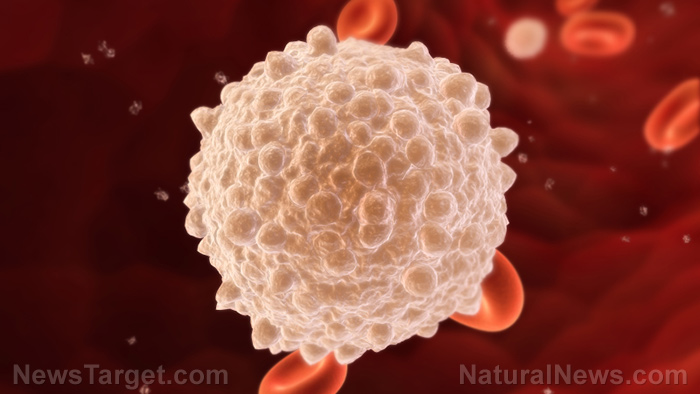
Histiocytosis – causes, side effects and treatments at NaturalPedia.com
Thursday, April 19, 2018 by Michelle Simmons
http://www.naturalpedia.com/histiocytosis-causes-side-effects-and-treatments-at-naturalpedia-com.html

Histiocytosis is a cluster of diseases that occur when there are an abnormally high number of white blood cells known as histiocytes. Histiocytes can result in organ damage and tumor formation. This group of diseases is composed of a wide variety of conditions that affect not only adults, but also children. This group of diseases are classified into five categories: L group, which includes Langerhans cell histiocytosis; C group, which includes non-Langerhans cell histiocytosis that involves the skin; M group, which includes the malignant histiocytosis; R group, which includes Rosa-Dorfman disease; and H group, which includes hemophagocytic lymphohistiocytosis. Langerhans cell histiocytosis, the most common form of histiocytosis, is likely a result of the acquired changes in the genes in early white blood cells, which leads to abnormal behavior. The number of abnormal cells then increase in different parts of the body, such as the skin, bones, and lungs.
Known side effects of histiocytosis
The initial side effect of histiocytosis is often a rash on the scalp, similar to cradle cap. Pain in a bone, discharge from the ear, loss of appetite, and fever may also occur. In some cases, the stomach is swollen and painful. Sometimes, an area of the brain called the pituitary gland is affected. In turn, this can result in the child passing large amounts of urine and being extremely thirsty. Other signs and symptoms can occur, including sudden weight loss, jaundice, vomiting, limiting, short stature, delayed puberty, mental decline, headache, dizziness, seizures, protruding eyeballs, and a generalized rash. Symptoms of histiocytosis also depend on where the tumors formed as well as the organs and systems involved and their functions.
Body systems harmed by histiocytosis
The body systems harmed by histiocytosis include the immune system, the cardiovascular system, the skeletal system, the integumentary system, and the excretory system.
List of foods or nutrients that prevent histiocytosis
There is no information on what foods can prevent histiocytosis. However, there are several foods that can help promote a healthy level of white blood cells, such as antioxidant-rich foods like grapes, onions, leeks, garlic, and tea, foods rich in omega-3 fatty acids such as salmon, herring, trout, walnuts, and flaxseed, and foods rich in vitamin C including lemons, lime, pineapples, oranges, berries, cauliflower, bell peppers, and carrots.
Treatments, management plans for histiocytosis
The treatment options for histiocytosis, particularly Langerhans cell histiocytosis, typically include those designed to treat cancer, such as chemotherapy, radiation therapy, surgery to remove abnormal tissues, corticosteroid medicines, and photodynamic therapy.
Where to learn more
- 8 Natural Ways to Increase White Blood Cell Count
- Does Your Food Have Light?
- To stay healthy, get the blood moving
- 14 Foods & Herbs To Cleanse Blood Toxins Naturally
- Boost Low White Blood Cell Count and Immune Function Naturally
Summary
Histiocytosis is a cluster of diseases that occur when there is an abnormally high number of white blood cells called histiocytes.
Histiocytosis typically causes tumor formation, organ damage, rash, pain in a bone, discharge from the ear, loss of appetite, and fever.
Histiocytosis may be prevented with the help of antioxidant-rich foods like grapes, onions, leeks, garlic, and tea, foods rich in omega-3 fatty acids such as salmon, herring, trout, walnuts, and flaxseed, and foods rich in vitamin C including lemons, lime, pineapples, oranges, berries, cauliflower, bell peppers, and carrots.
Histiocytosis can be treated through treatments designed for cancer, such as chemotherapy, radiation therapy, surgery to remove abnormal tissues, corticosteroid medicines, and photodynamic therapy.
Sources include:
Tagged Under: Tags: Histiocytosis





